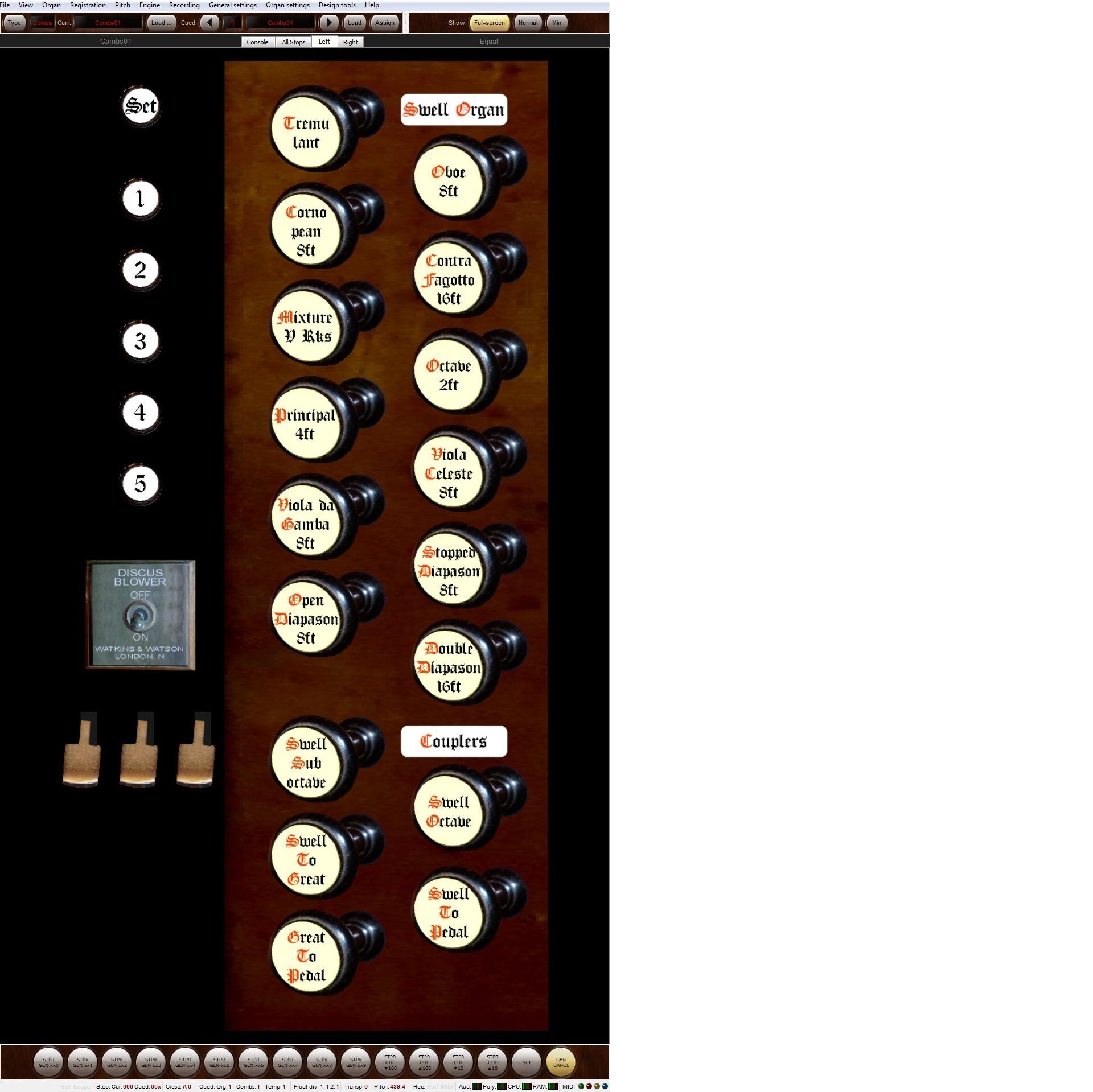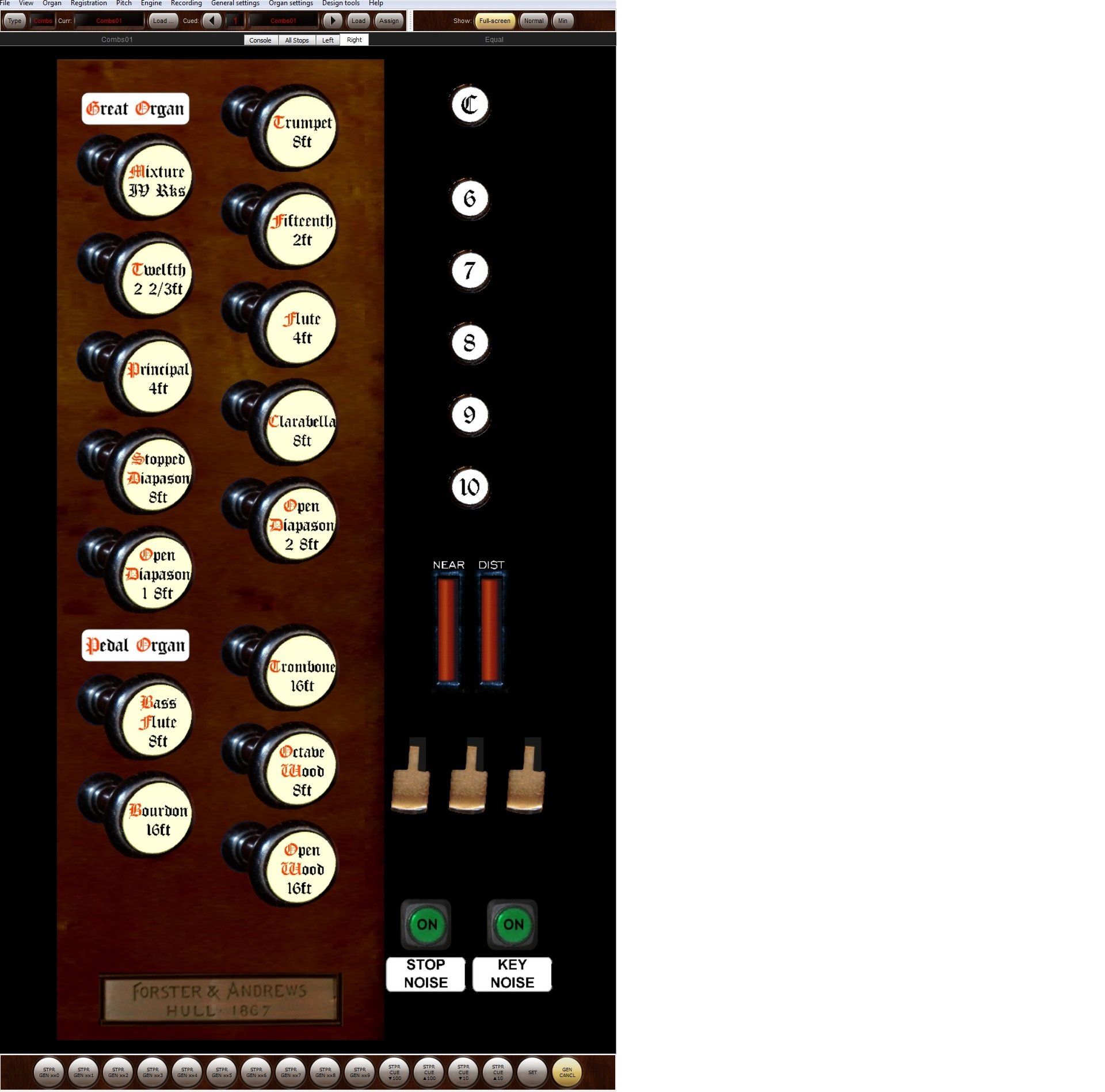Forster & Andrews 1867
GROSSE ORGEL
SCHWELLORGEL
PEDALORGANE
Zusätzlich zu den standardmäßigen Intermanual- und Pedalkopplern bieten wir Oktav- und Suboktavkoppler für den Swell sowie A Pedal Bass und einen Swell to Great Melodiekoppler an. Die Orgel wird in zwei Perspektiven präsentiert: Nah und Mittelfern. Die Lautstärke jeder Perspektive kann über die Lautstärkeregler angepasst werden.
Screenshots
Unten sind Screenshots der Konsole, die die Einzelbildschirm-Konsole sowie die beiden vertikalen Pfosten zeigen.
Die Grafik und einige zusätzliche Features wurden von Olivia Nagioff entwickelt.
Größere Bilder können aus der Cloud heruntergeladen werden, indem Sie auf die Schaltflächen neben den Miniaturansichten drücken.
Demos
Die erste Demo des William Mathias Prozession wurde uns freundlicherweise zur Verfügung gestellt von "Mirch"





